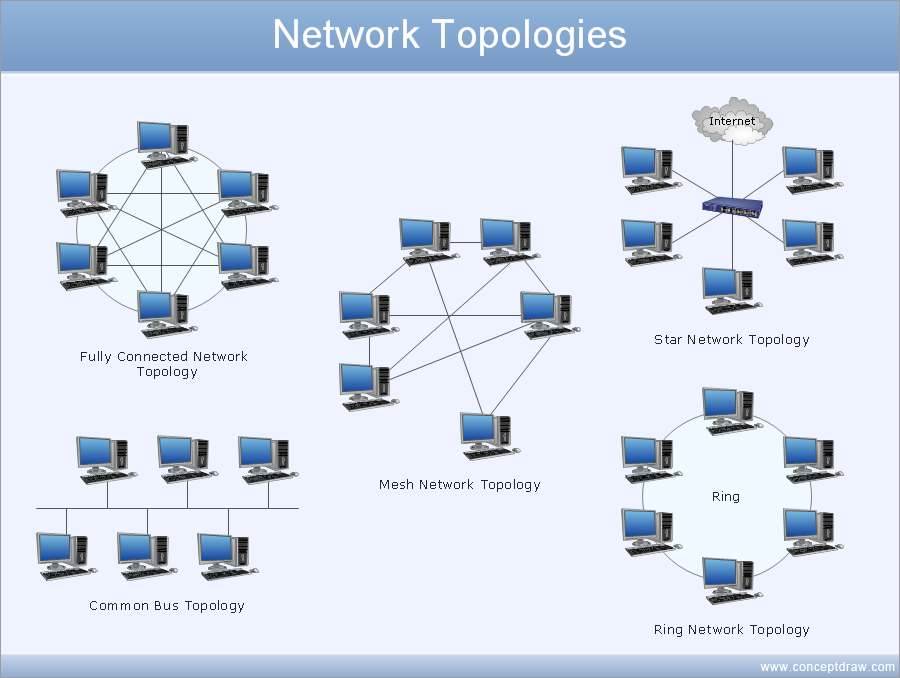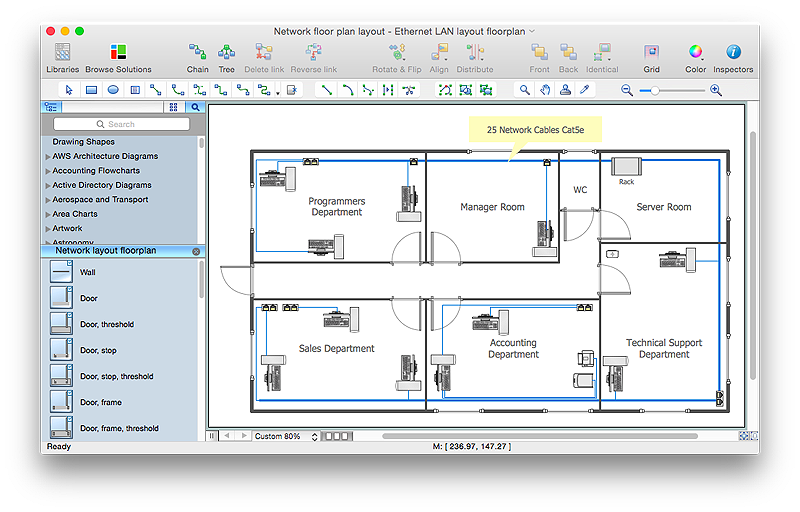Network Diagramming with ConceptDraw PRO
At the moment computer networks are widespread, various types of computer networks are constructed around the world, operate and interact with each other. There are many kinds of computer networks that differ in the transmission medium, in communications protocols, in size, topology, organizational intent, and also in territorial basis. There are popular such types of computer networks as Global Area Network (GAN), Wide Area Network (WAN), Metropolitan Area Network (MAN), Local Area Network (LAN). ConceptDraw PRO is a powerful network diagramming software, perfect for software engineers, software designers and software developers who need to draw Computer Network diagrams, designs, schematics, and network maps in no time. The pre-drawn shapes representing computers, network devices and smart connectors offered by ConceptDraw solutions help to create the accurate diagrams and documentation, represent computer network topologies and designs, depict Computer network architectures, logical, physical, cable networks, and vehicular networks.Draw Network Diagram based on Templates and Examples
ConceptDraw is rapid and powerful network diagram drawing software with rich examples, templates, design objects and stencils.
 Rapid UML
Rapid UML
Rapid UML solution extends ConceptDraw PRO software with templates, samples and libraries of vector stencils for quick drawing the UML diagrams using Rapid Draw technology.
 Specification and Description Language (SDL)
Specification and Description Language (SDL)
For people in the field of systems engineering or system design, working with specification and description language (sdl) and finite state machines (fsm).
HelpDesk
How to Create a Network Layout Floor Plan
With technology and market forces demanding ever quicker business response times, a well-structured computer network is the foundation of positive communication between employees, and with the wider world. When you walk into most modern work offices, there is a good chance you will be greeted by banks of computer screens and terminals, perhaps some sales points screens or server stacks, almost certainly routers and printers. A side effect of this amount of hardware is the amount of cabling necessary to connect these elements into an effective local area network (LAN). This is the idea behind a network layout plan - it can show how a network is connected, how data transfers between those connections, and give an overview of devices and hardware used in office. To create a practical computer network floor plan, the network administrator must adhere to the specified requirements and limitations of the office or building in which the LAN will operate - things such as hardware availability,- Report On Component Of Network Used In The Computer Lab
- Computer Schematic Diagram For Computer Lab
- Which Topology Are Used For Computer Lab In Collage
- Best Computer Laboratory Layout With A Network Topology
- Report On Comonent Of Network Used In Computer Lab
- Local area network (LAN). Computer and Network Examples | Fully ...
- Computer Diagrams And Computer Rooms
- Logical network topology diagram | Local area network (LAN ...
- Network Layout Floor Plans | Design elements - Network layout ...
- Computer Lab Setup Diagram
- Layout Of Computer Lab Wiring Project
- Network Layout Floor Plans | Home Networking | Local area network ...
- Computer Lab Design Layout
- Local area network (LAN). Computer and Network Examples ...
- ConceptDraw PRO Network Diagram Tool | Network Topologies ...
- RCP - Computer lab | Local area network (LAN). Computer and ...
- Computer Room Hardware Structural Design
- Local area network (LAN). Computer and Network Examples ...
- Cable Rack Server Room Visio
- Lan Network Of Computer Lab


